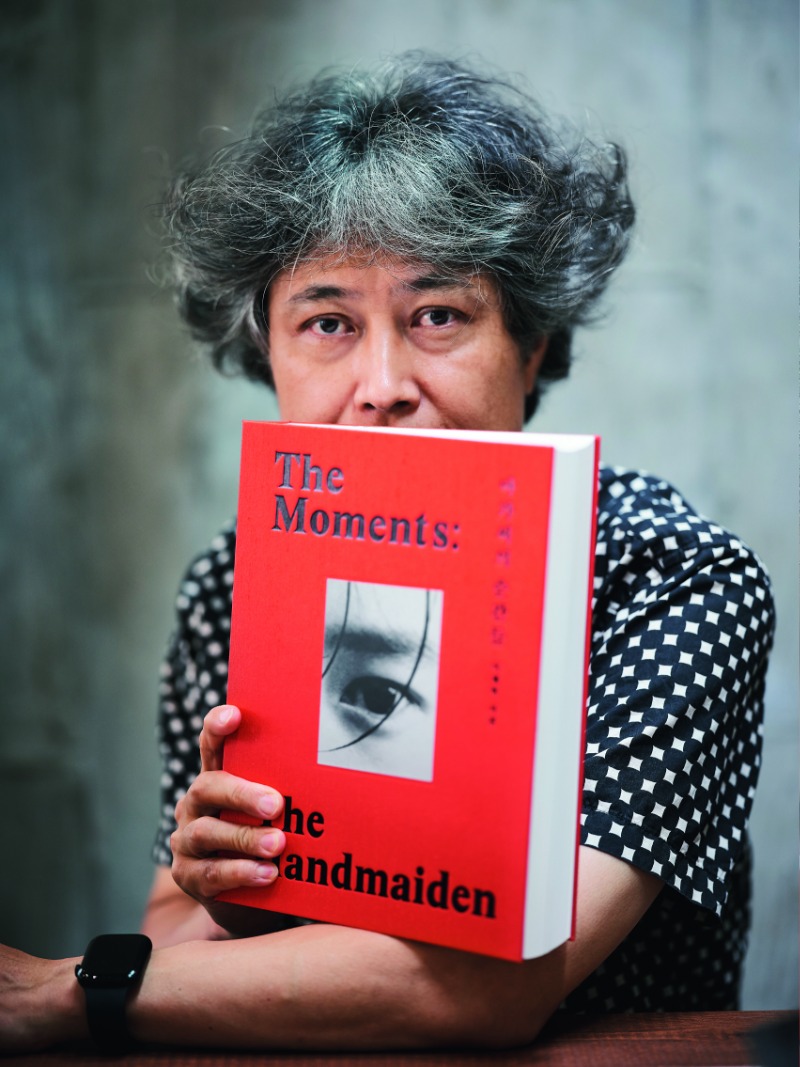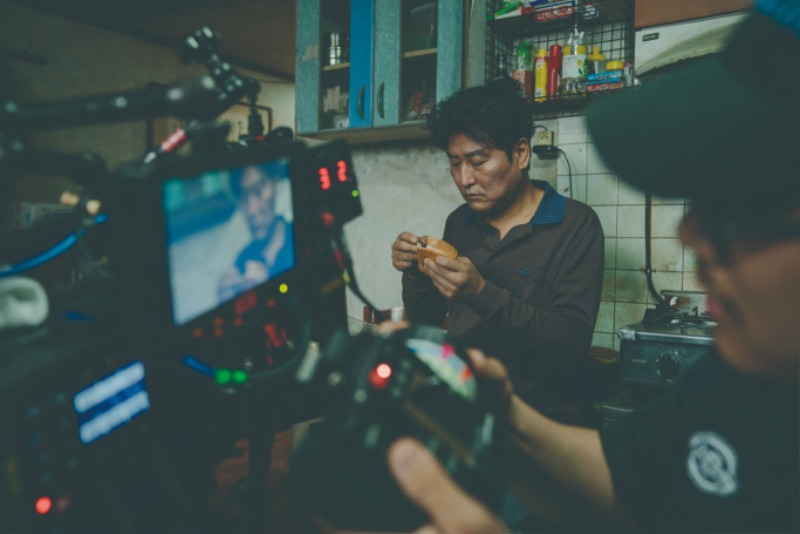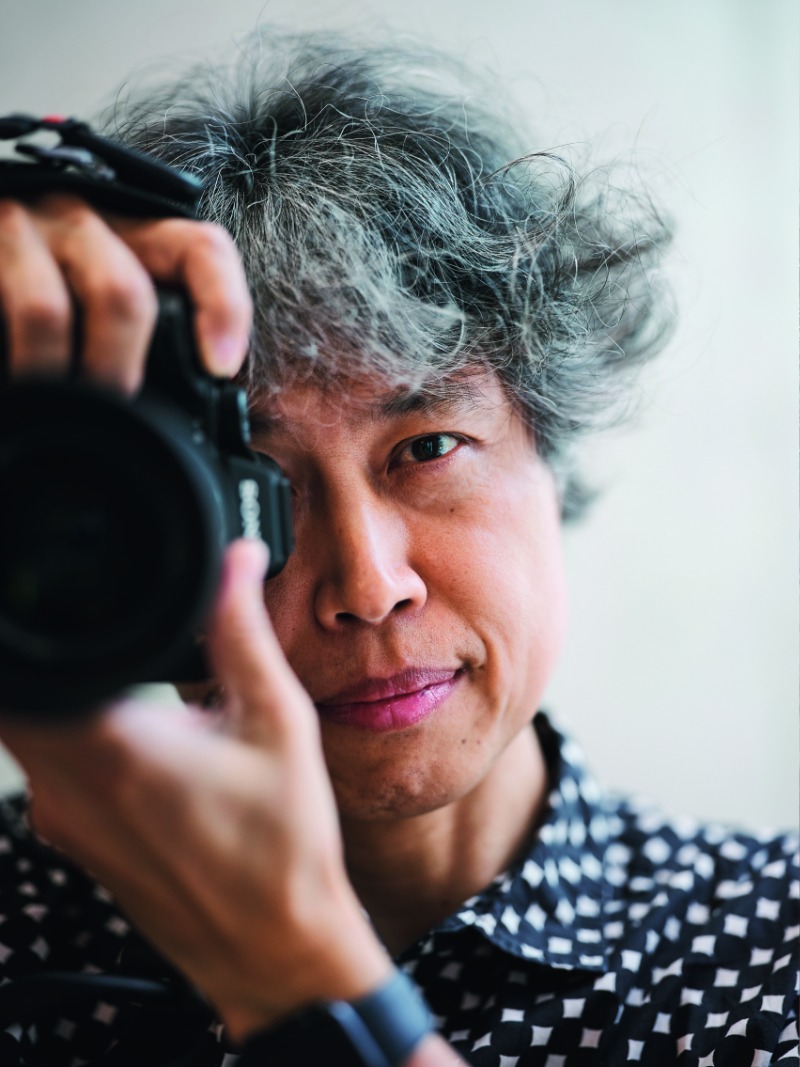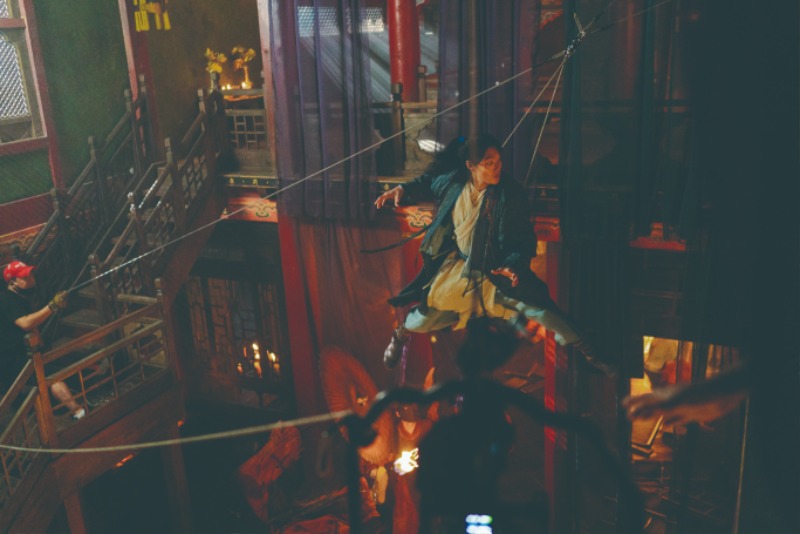On any given film set, teamwork is of paramount importance, but one person always works alone – the film’s still photographer. It can get lonely, at times, but the pride of accomplishment is entirely theirs, too. At a café in the college town of Sinchon, we caught up with still photographer Lee Jae-hyuk, who has spent the last 30 years in the thick of the industry.

Film still photographer Lee Jae-hyuk has worked on set for legendary directors in Korea and abroad, capturing the shots that determine our first impression of any film. Recently, a collection of Lee’s still photos for director Park Chan-wook’s “The Handmaiden” was published as a book titled “The Moments: The Handmaiden.”
The fundraising to publish “The Moments: Handmaiden,” a collection of still photos of director Park Chan-wook’s film “The Handmaiden” (2016), was a complete success this year: 100 million won, raised in just 16 minutes. The book, which successfully reached its fundraising target via the Tumblbug crowdfunding platform this spring, has a total of 520 pages and a hefty price tag to match, but received extraordinary attention from the moment it was first announced. It is filled with 400 still photos ing the shoot itself and intimate details of behind-the-scenes action. The author of this photo book is still photographer Lee Jae-hyuk.
Since the 1990s, Lee has produced still photographs that determine first impressions of a film. Now, known for his unique artistic sensibility and persistence, Lee is a sought-after artist trusted by many famous directors. Even a cursory glance at his filmography reads like a curated selection of representative works from the last 20 years of Korean cinema. In addition to Bong Joon-ho’s “Parasite” (2019), Lee also worked on the set of Han Jaerim’s “The Face Reader” (2013), Kim Jee-woon’s “I Saw the Devil” (2010), and Choi Dong-hoon’s “Tazza: The High Rollers” (2006).

A still photograph taken on the set of director Bong Joon-ho’s international hit “Parasite,” Lee’s third project with Bong, following “Snowpiercer” and “Okja.”
©Lee Jae-hyuk
What kind of job is film still photographer?
I’m essentially the crew member in charge of taking photographs on set. In the old days, studio executives apparently had to sell new films to theaters before they were actually done, based only on still photos. Now, stills are mostly used for marketing before the film’s release, plus promotion in foreign markets. You could say that a still photographer works on the packaging of a film – the wrapping paper.

Always trying new and different methods to make his still photographs look like actual movie scenes, Lee Jae-hyeok often finds inspiration in art exhibitions.
How did you become a still photographer?
My brother actually started working in the film industry first. After that, my father suggested that I try studying something that would be helpful to my brother’s career, too, so I ended up pursuing photography. My first job was taking stills on my big brother’s film set – and I ended up really taking to it. It was fun, making all those instant snap judgements based on the situation.
I think that probably has something to do with how I’ve been able to stick with this line of work for so long.
What skills are needed?
It’s necessary to understand the process of filmmaking; you have to understand how everything works on set. Unlike directors and other crew, a still photographer does his own prep, shooting and post-production. I always want my stills to look like a scene out of a film rather than an ordinary photograph, so I think a lot about how to achieve that effect. I remember being happy when actor Choi Woo-shik saw my stills for “Parasite” on set and said, “It looks like a movie.”
What kind of preparations do you make?
I focus on the feeling I get after reading the screenplay for the first time. Then, based on that feeling, I consider what colors might best suit the film. I tend to go to lots of art exhibitions to get ideas, because the colors hit me differently when I encounter them in person than when I see them on a computer or mobile screen. Before shooting “The Handmaiden,” it was very helpful to see Picasso’s paintings in Paris.
What challenges come with tech-laden movies?
Well, those are projects that have a lot of blue screens and green screens on set, and you have to make sure they don’t get caught in the frame. So, you have to work with these limited angles while still achieving a cinematic effect. For example, the screenplay for director Choi Dong-hoon’s “Alienoid” (2022), to me, had the scent of an old martial arts film, so I wanted the stills for it to have that kind of retro feel.
I also worked on the short film “Life is But a Dream” (2022), which Park Chan-wook shot entirely on his iPhone, and the climax involved LED walls. In the same way as the director, I had to shoot all my stills with an iPhone as well, so I felt simultaneously limited and invigorated.
What about foreign films?
I worked on “Equals” (2015), “Avengers: Age of Ultron” (2015) and “Endings, Beginnings” (2019). The languages and locations were new and different, but what moved me the most was meeting some of Hollywood’s still photographers. Most people in the film industry are working toward positions of greater power, whether as director or head crewmember, but in Hollywood I actually met a lot of people who had been at their one job for a very long time, just keeping their heads down and quietly working. It’s like, you keep the same job, and the upgrade comes in the scope and scale of the film you’re working on.
It felt closer to something like real artistry. When I was working on “Endings, Beginnings,” I met a photographer in his seventies who’d taken the stills for “Pretty Woman” (1990). His hearing was going, but he was still as energetic as ever on set, and I thought: I’d like to be able to work like that, too, later on.
Tell us about “The Moments: The Handmaiden.”
There was one moment on set when I felt a real pang of sadness. The director, actors, and crew had all gathered to take a group picture, but I was the one taking the picture, so I couldn’t be in it. Another thing that makes me sad sometimes is how very, very few of the countless shots a still photographer takes are actually released. The rest just sort of disappear. So when the photo book came out, it felt like a real resolution to all that sadness. It’s a way for me to actually share this one trajectory of my life with other people. There aren’t many examples out there of film stills being collected into a book – in a very real way, this was director Park Chan-wook giving me a very big gift.
Keeping the quality of the photos as high as possible drove up the printing costs quite a bit, but thankfully, it still got a lot of love from a lot of people. We even held an exhibition at the Mit Dem Bauhaus showroom in Seochon. It meant a lot to me, as a still photographer, because we just don’t get a lot of opportunities to share our work in books or exhibitions.

Actor Ryu Jun-yeol in a mid-action sequence of director Choi Dong-hoon’s 2022 film “Alienoid.” For this shot, Lee used retro color tones reminiscent of an old martial arts movie.
©Lee Jae-hyuk
How do you spend your time off?
Well, I used to travel a lot internationally, but since the start of the pandemic I’ve been traveling more in Korea, doing a lot of camping. I’ll go to art shows, too, and binge watch films I’ve been meaning to see. I especially like nature aries. I don’t take many pictures, other than snapshots of food to post on social media. I tend to think the fewer photos you take off set, the more passion you have to pour into the ones you take on set. My stamina and focus actually aren’t that great, so I try to conserve my energy.
What are your plans, looking ahead
I’m working on shooting the stills for Han Jae-rim’s next OTT series, “Money Game.” It was originally a webtoon, and it’s a story about people stuck in a repetitive cycle of hostility and cooperation as they face some extreme situations. I approach each project thinking that it might be my last; that’s the mindset I bring to every shoot. Sometimes you end up getting hurt while you’re shooting on set.
After “The Front Line” (2011), directed by Jang Hun, I actually had to have knee surgery. And now my eyesight is starting to go, too, from aging. I really have no idea how much longer I’ll be able to do this work, and I want to always keep that in mind, so I can give my all to every moment. Now that Korean films are attracting so much interest abroad, I hope my stills will help stoke excitement about Korean culture with foreign audiences, too.
Nam Sun-wooReporter, Cine21
Heo Dong-wuk Photographer